
To the world of sports, she's Comaneci, the gymnastics superstar who made history after landing the first perfect score in the history of the game. But to our story, she's Nadia, the young Romanian girl who struggled to find peace in her life after becoming a national hero. Yes, there's a dark side to almost every tale of success. But the secret cracks and scars in Nadia's perfect 10 are more dark and twisted than most.
Explored by a brutal Communist regime in need of national symbols, scrutinized unfairly by the American press, and robbed by a man she thought to be her friend, Nadia's story is not one for the faint of heart. But the journey of gymnastics' iconic perfect 10 is as inspiring as it is tragic. Accompany us in this novel-worthy tale of success and struggle, and find out if Nadia Comaneci really got the happy ending she fought so hard for.
Born In The Remote Carpathian Mountains
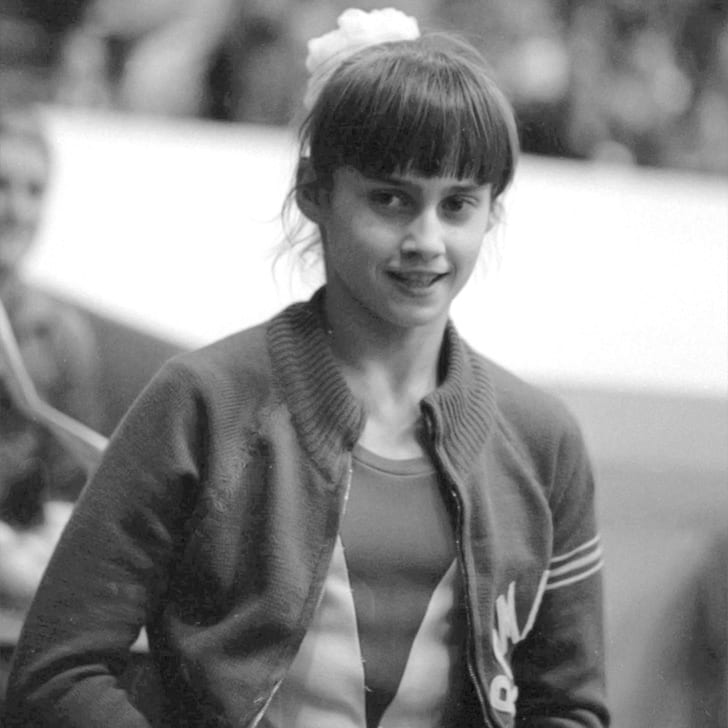
November 12, 1961: the legendary Olympic gymnast Nadia Comaneci was born. But at the time, no one could guess she would later become one of the ultimate symbols of Romania and the world of sports in general. She was just another child, living in the remote city of Onesti, a small town of the Western Moldavia region of the Carpathian Mountains.
Nadia's parents Gheorghe and Stefania, separated during the '70s, and the young gymnast was left living with her mother and younger brother after her father moved to the Romanian capital of Bucharest. But Nadia's childhood was heavily marked by a distinct father-figure: the legendary gymnastics coach Béla Károlyi.
A Young Prodigy?
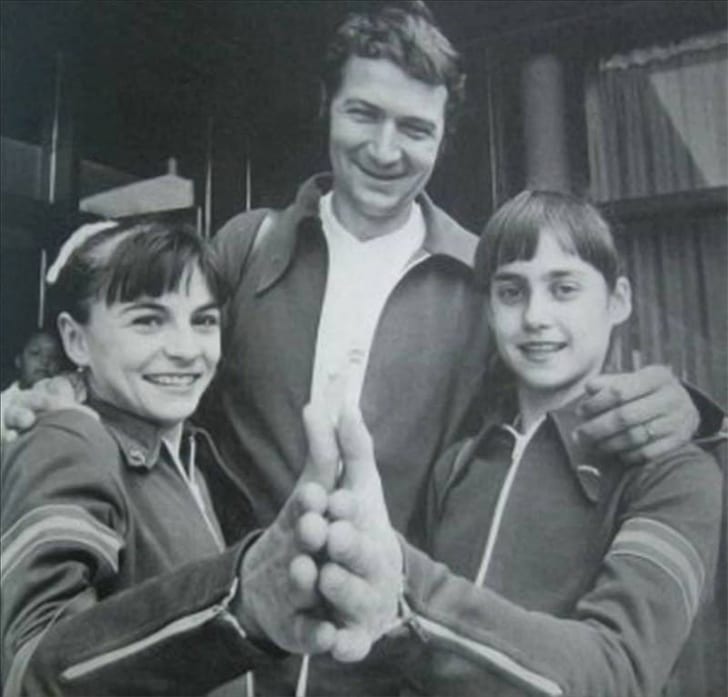
At the age of 6, Nadia was spotted by the well-trained eye of Károlyi. At the time, she was a restless child who loved to practice gymnastics with her local kindergarten team, known as "The Flame" (Flacara in Romanian). Gymnastics was a popular subject in the '60s Romania, but Károlyi understood early on there was something special about little Nadia.
After seeing Nadia and her friends playing quite nimbly at their schoolyard, Károlyi decided to recruit the young girls to attend his after-school gymnastic classes. This seemingly unimportant decision turned out to change Nadia and Károlyi's lives forever.
Fiercer Than Most
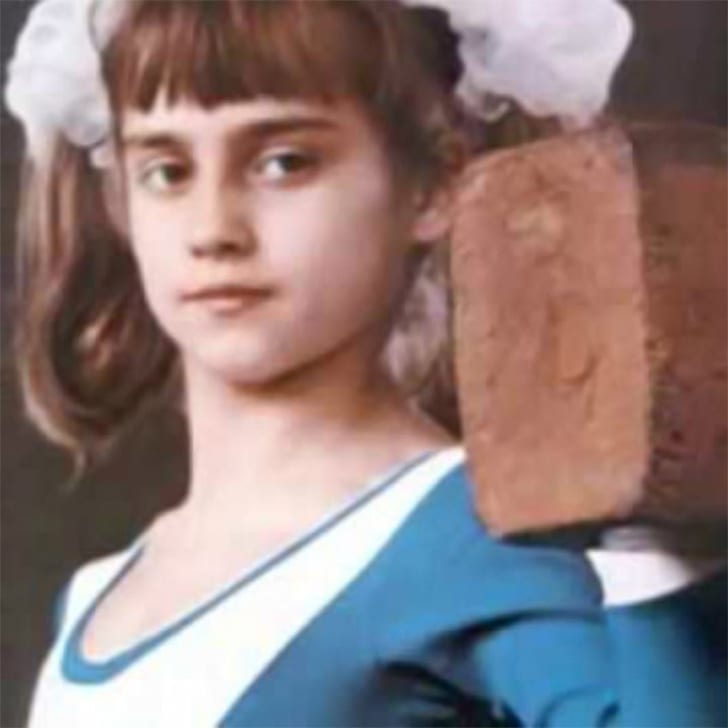
While Károlyi's reputable school was mostly attended by out-of-town students, Nadia was lucky enough to learn from the best while continuing to live at home. But if there's an explanation for the fact Károlyi happened to set his school in the small town where Nadia was born, we have to call it destiny!
The local girl outperformed her peers almost immediately, and she started entering gymnastic competitions even before she was 10. In fact, Nadia's first major competitive win came in 1970, back when she was only 9-years-old. At that incredibly precocious age, she became the youngest gymnast ever to win the Romanian Nationals.
Hard Work Pays Off
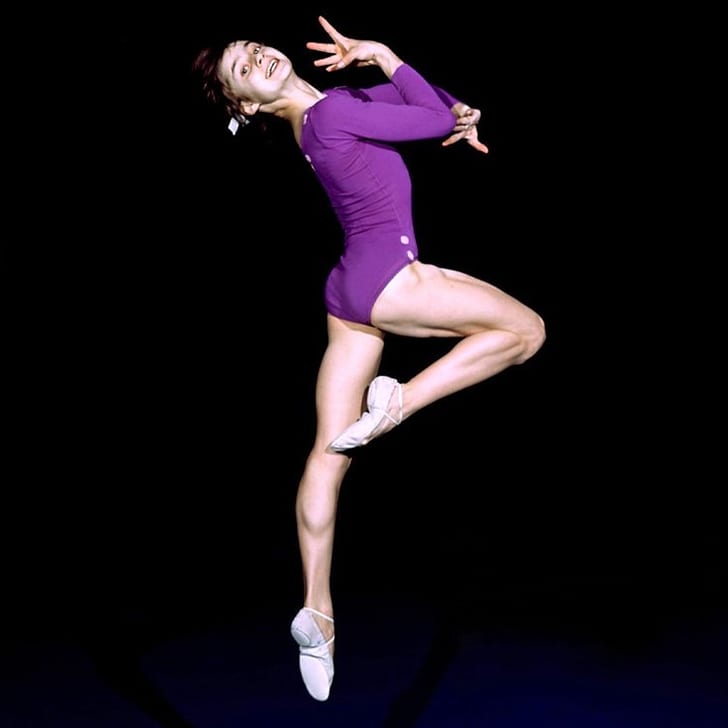
Living in the '70s, Romania was full of challenges and hardships. But Nadia was able to take her mind off the country's poverty and troubled political situation by working hard at Károlyi's school. She practiced several hours per day, as most skilled gymnasts do, and saw her hard work pay off in unprecedented ways.
She quickly became an international household name, winning her first gold medal in 1971, during a Romanian-Yugoslavian dual junior competition. Over the next few years, victory became a habit for young Nadia. She landed the gold medal in the Druzhba Junior Friendship Tournament of 1973 and made a huge international impact with a successful appearance at the 1975 European Women's Artistic Gymnastics Championships.
Making It To The U.S.
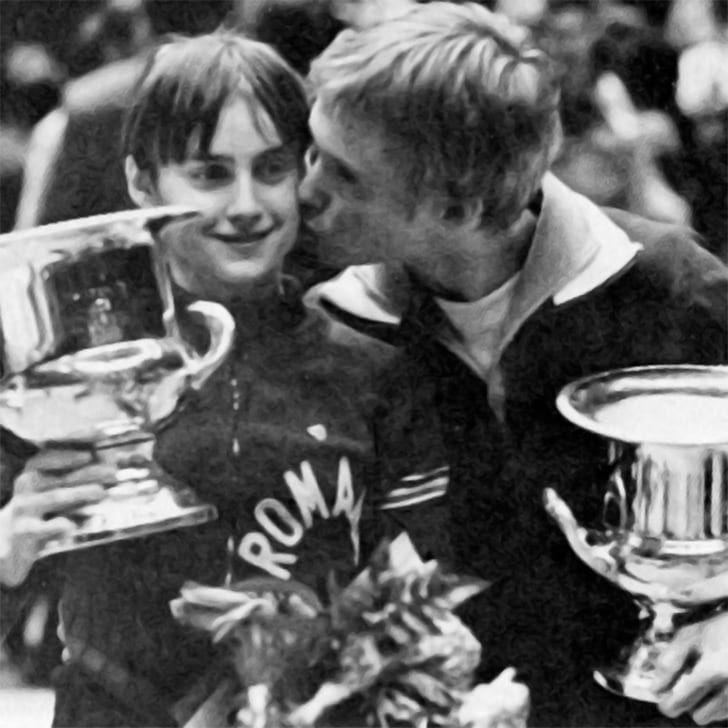
Even though Nadia was already famous in the gymnastics world, she had to wait until 1976 to make it to the U.S. She competed at Madison Square Garden's American Cup and obtained sensational results, including some scarce scores of 10. It was there she met the American gymnast Bart Conner, who ended up becoming a vital figure in her life (but there's more on that up next).
At 14, Nadia impressed the pros and judges with her clockwork-like precision and remarkable body control. But she still had to prove herself on the biggest stage of all: the 1976 Montreal Summer Olympics.
Olympic Superstar
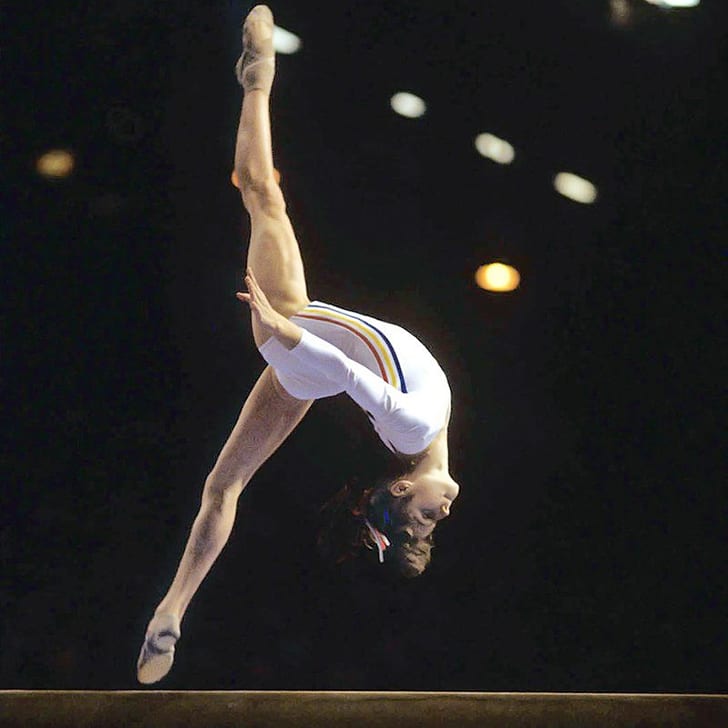
In a demanding sport like gymnastics, you need to prove yourself at a very young age if you really want to make an impact. Entering her first Olympic competition at 14-years-old, Nadia seemed to be on the right path to make history. But not even her most optimistic fans could have predicted what was about to happen in that historical Summer of 1976.
As she stepped onto the Olympic stage, Nadia knew a lot was expected of her. But as she graced the crowd with some notably free-flowing gymnastics, it became evidently clear this Romanian sensation was more than an accomplished athlete: she was an ultimate Olympic superstar.
Breaking the Scoreboard
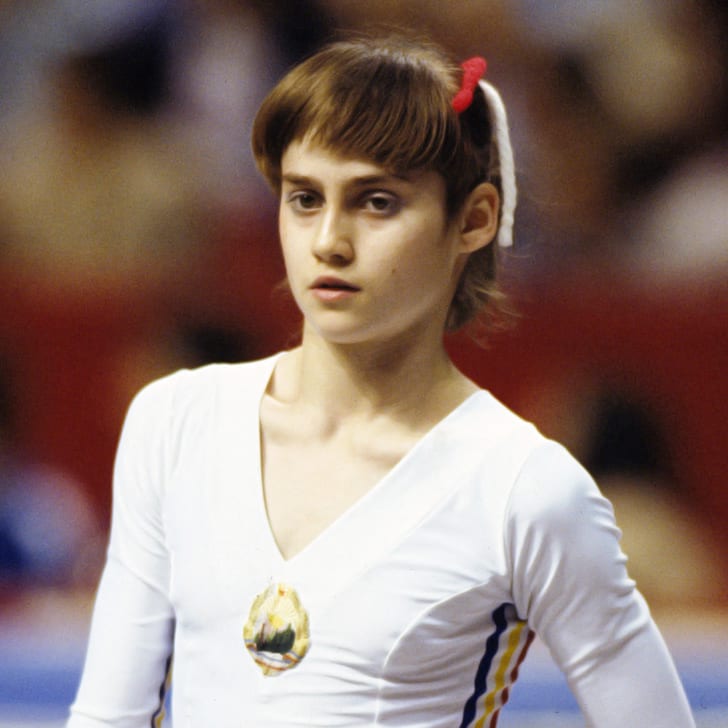
Here and there, gymnastic judges gave 10's to some remarkable routines. But before 1976, nobody had ever witnessed a perfect 10 in gymnastics. It's a ruthless and demanding sport, ruled by judges who ask no less than utter perfection from the competitors.
But as Nadia finished her now-iconic uneven bars routine at the 1976 Olympics, the baffled crowd felt something exceptional had just happened. Yet, when Nadia turned to look at the scoreboard, she couldn't believe it: the sign said 1.00, which is by any means a dreadful gymnastics score. What was going on?
A Perfect Moment in Time
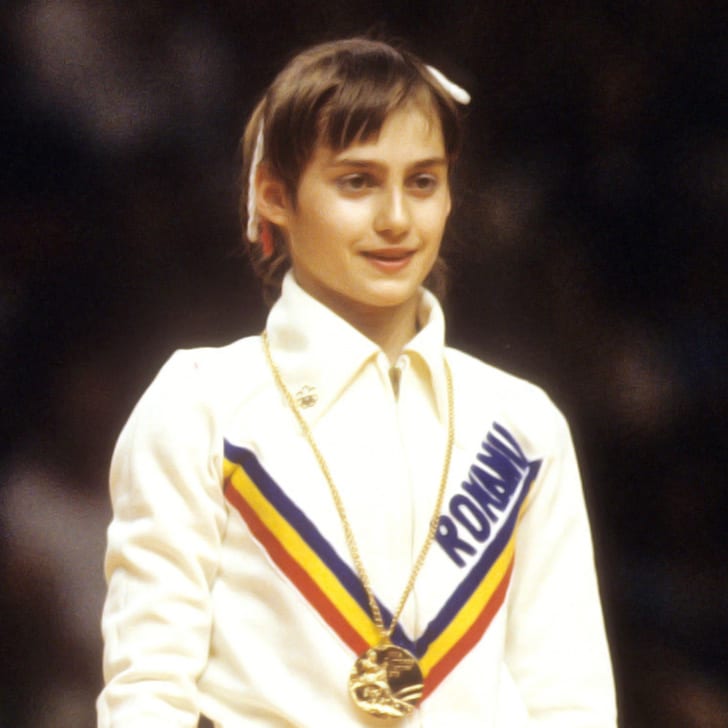
Nadia couldn't believe it. A 1.00 score for her spotless routine? How was that possible? Fortunately, the judges cleared out the air very quickly. It turned out Nadia had done so well that the scoreboard wasn't even programmed to show her score! That's right: she had just hit gymnastic's first-ever perfect 10.
It's one of those movie-like moments in time that are just too good to forget. In a mere instant, Nadia went from fearing the worst to realizing she'd just overdid herself. At 14 years of age, the Romanian wonder had literally broken the scale of the gymnastics world.
The Calm Before the Storm
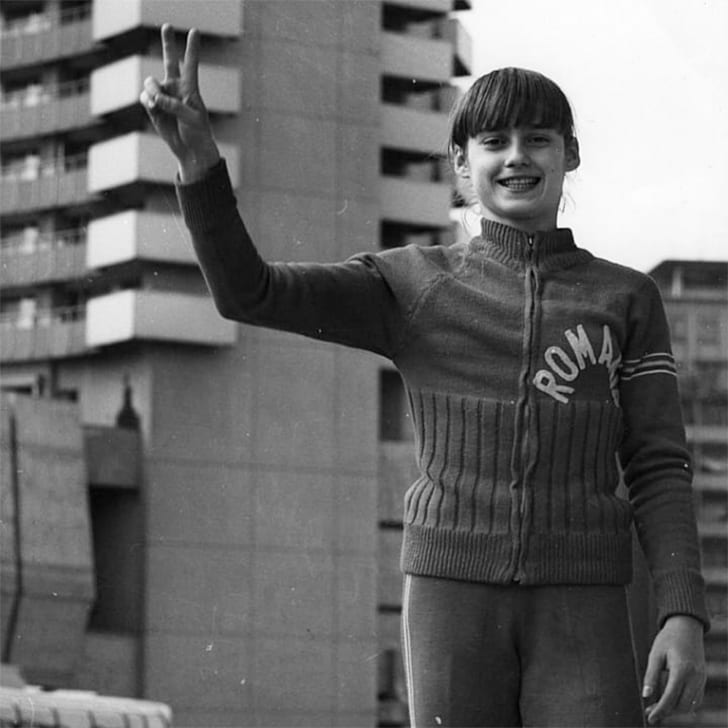
Needless to say, the Romanian Communist government of Nicolae Ceausescu decided to make the most out of Nadia's whopping Olympic results. She became an instant national hero, and she was awarded multiple Party accolades, such as the honorary title of "Hero of Socialist Labor."
Outside of Romania, she was praised as BBC Overseas Sports Personality of the Year and was named "Female Athlete of the Year" by the Associated Press. In gymnastics, she became an instant symbol after obtaining that seemingly impossible perfect-10 score. But what does it really feel like to have the world at your feet by the time you're 14?
Too Much, Too Soon
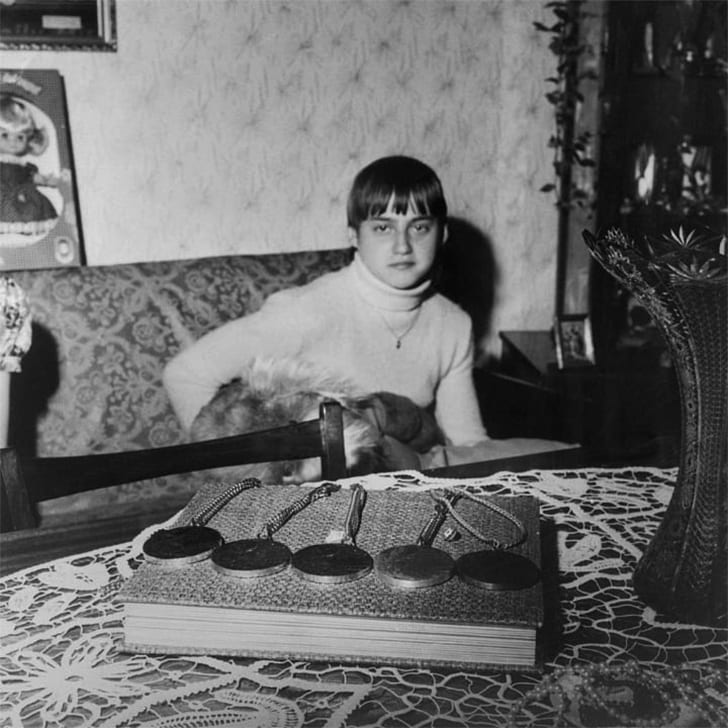
Nadia was getting so much attention from the press and the Romanian Communist Party that she decided she couldn't take it anymore. In a tragic moment for gymnastics, for Nadia, and for Romania, the young athlete tried to take her own life by drinking bleach.
She ended up surviving the attempt and was hospitalized. But while Nadia's desperate move could've turned out a lot worse, it ended up damaging her career forever. Being a gymnast demands extreme discipline. Nadia's sudden break in training had a deep impact on her competitive results. In fact, she was never quite the same.
Resisting Every Hardship
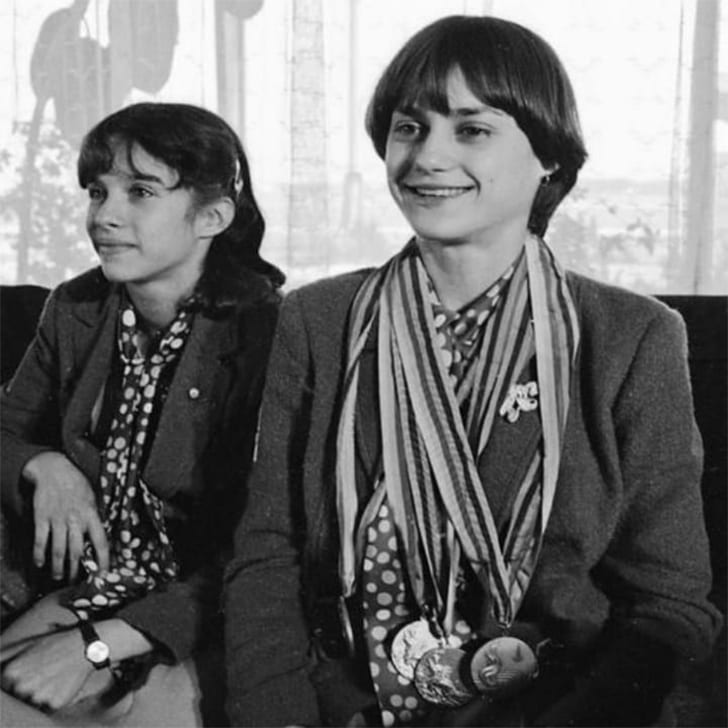
The pressure wasn't the only thing getting in the way of Nadia. She was also struggling with the natural body changes that occur during puberty. And she was sad about being forced to leave her beloved family and coach Károlyi behind to practice at Bucharest's sports complex.
To put it lightly, 1977 was a bad year for Nadia, who experienced first-hand the downsides of being a night-to-day national icon. But somehow, she still found the necessary strength inside herself to go back to training and deliver some not perfect, but still awe-inspiring competitive results.
Back To Károlyi and Back To Gold
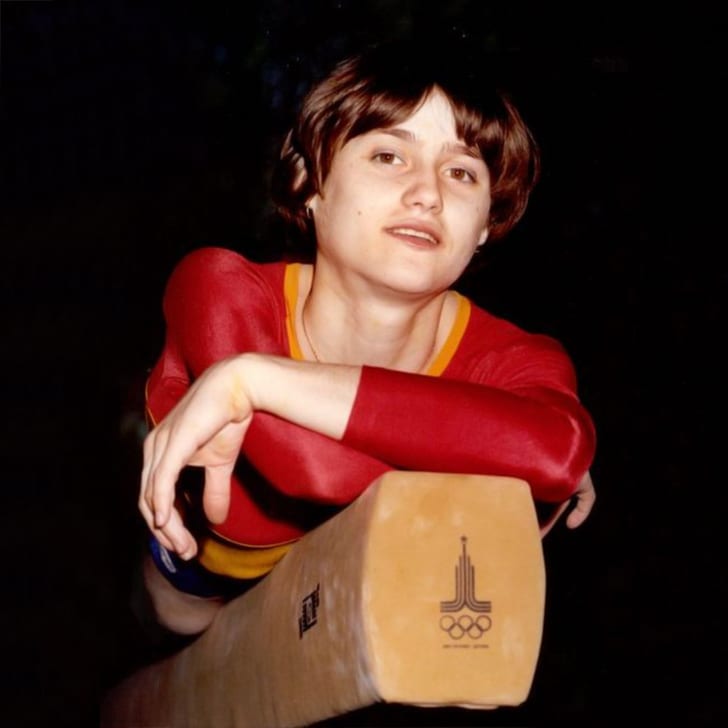
After a disappointing performance in the 1978 World Championships, Nadia was allowed to go back to training with Károlyi. Back in the familiar ground and fully recovered from her dramatic near-death experience of 1977, Nadia was 0.5 points away from scoring her second perfect 10 at the 1979 World Championships of Fort Worth, Texas.
To make it even more impressive, Nadia delivered that 9.5-score routine shortly after being hospitalized for blood poisoning and competing against the doctor's instructions! She seemed to be ready to deliver something exceptional at the 1980 Summer Olympics, hosted in the world's Communist "capital" of Moscow.
Can the Pressure Get Any Higher?
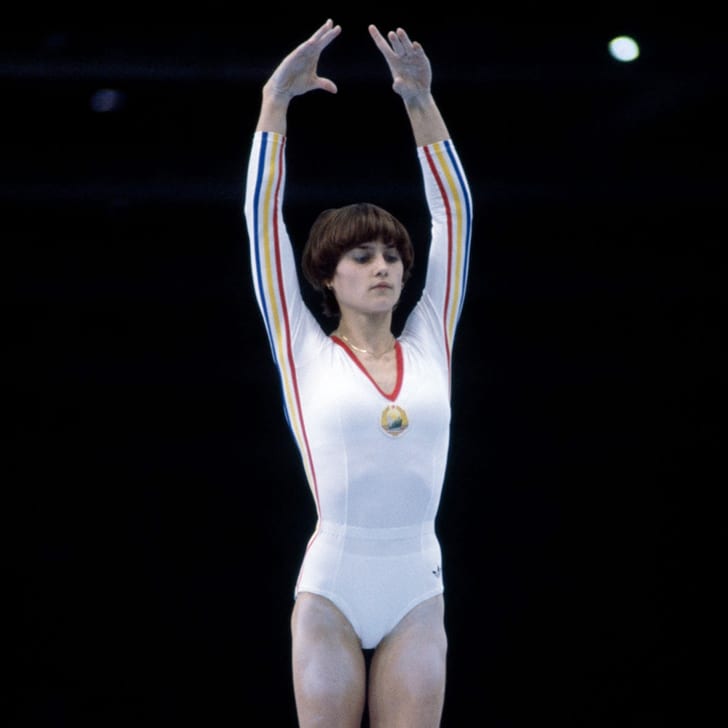
The 1980 Summer Olympics was a special event for Romania. The competition was taking place in Moscow and was seen by the communist countries as a sort of "all-Communist" event. With this in mind, a lot was expected from Nadia and her coach Károlyi.
At the Olympics, the young prodigal gymnast did the best she could to honor her country, landing two gold medals for Romania. But the communist Romania of the early '80s was full of grudges, prejudice, and misconceptions. And both Nadia and Károlyi were being treated more like prisoners of the government than bonafide national heroes. Even though Nadia did attend the 1984 Olympics as an observer, the Moscow games marked her last competitive Olympic appearance.
Used by Romania
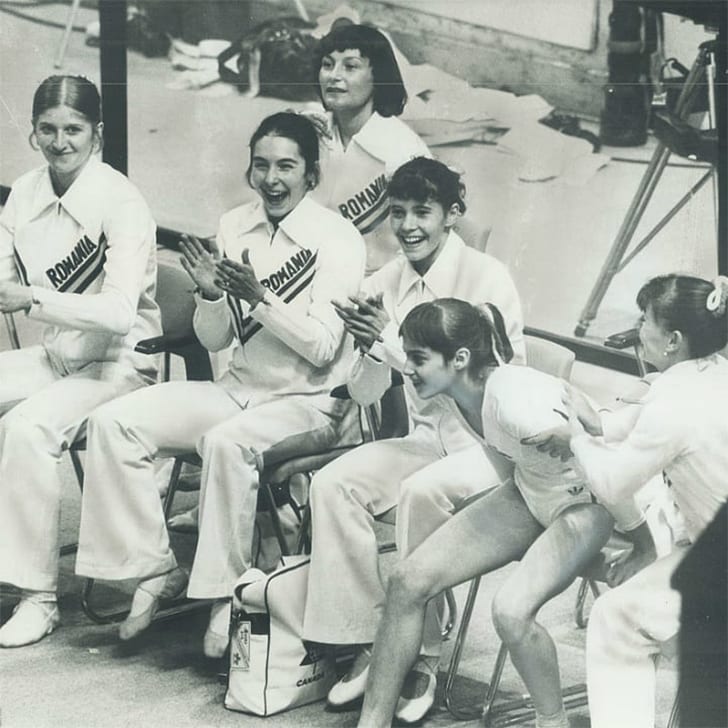
In 1981, Romania decided to cash-in on Nadia's name and send her on an 11-city tour around the world. With the tour, the state gained an impressive $250K, but Nadia only received about $1,000 for the effort. If it wasn't already obvious,, she was being used as a tool by the Party, and the '81 Tour showed that was evidently clear.
But the situation got even worse for the young gymnast when her coaches, including Kárelyi, decided to run away and live in the United States. The only good thing about the Nadia '81 Tour was that the young girl got a chance to meet briefly with the American gymnast Bart Conner, who she found "cute" and "incredibly friendly and fun."
The Life of a Communist National Hero
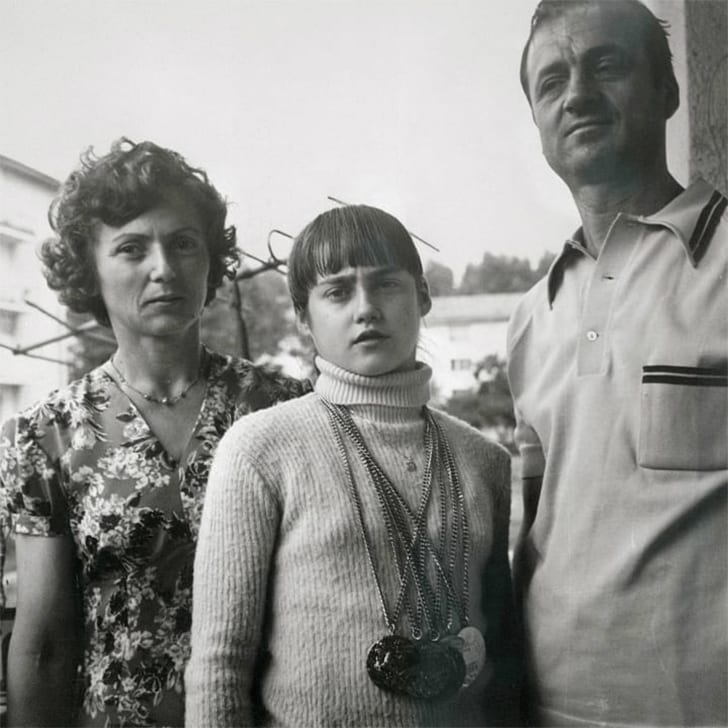
Without Károlyi around, Nadia's life in Romania took a turn for the worse. She'd always been monitored by the state, but now she was basically forbidden from traveling, and she only got a chance to leave the country whenever the state asked her to.
But about the perks of being a national hero? Well, in '80s Romania, there were none. The communist dogma of equality was harshly applied to Nadia, who confessed in a later interview that she had "no money" and "no special treatment." She was just another figure amidst the crowd, except she was being followed around by the police and subjected to unhealthy levels of state-sponsored pressure.
Enough's Enough!
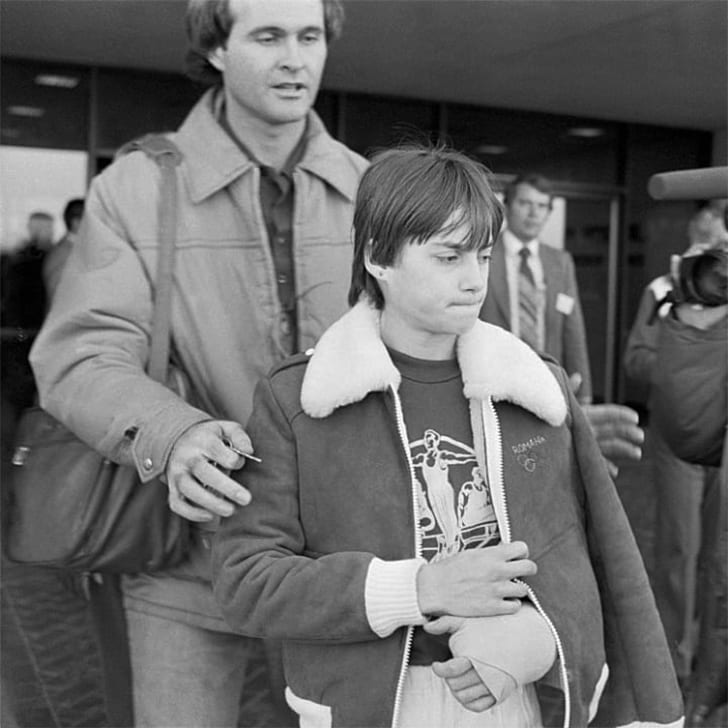
In 1989, Nadia said 'enough's enough' and made the decision to leave Romania. She wanted to pursue a better life in the United States, so she joined a group of deflecting Romanians led by a man named Constantin Panait. This all happened weeks before the Romanian Revolution of 1989.
From an Olympic champion to an escaping Communist prisoner, Nadia followed Panait through the icy roads leading to Communist Hungary until reaching liberal Austria. There, she sought help from the U.S. embassy and was finally put on a plane to America. End of the story, happy ending for all, right? Sadly, not by any means.
Still Under Watchful Eyes
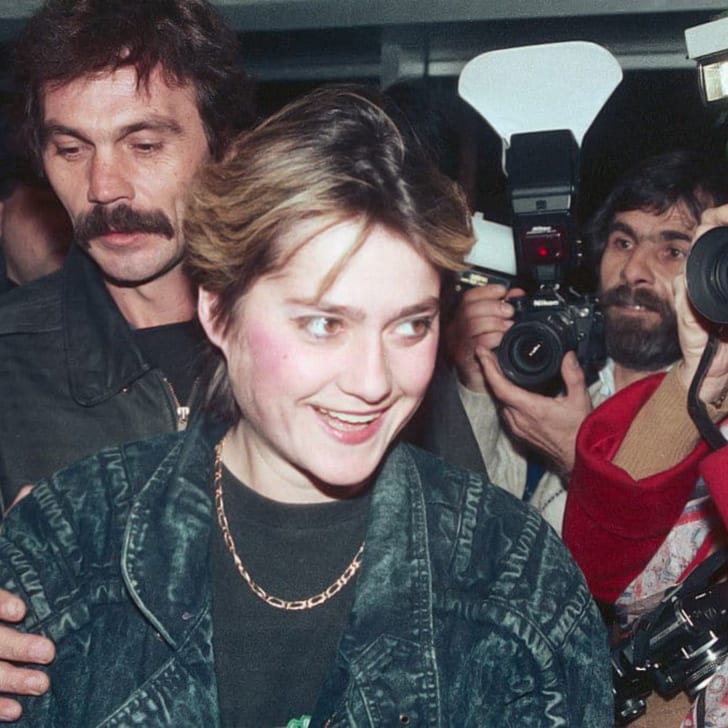
If you think Nadia was bound to be free in the land of the free, that's because you don't know the American press. The news of a perfect-10 gymnastics prodigy arriving to live in the U.S., combined with the Cold War environment of the late '80s, meant Nadia wasn't going to see her life get any easier.
Followed around by the police in Romania, Nadia was heavily persecuted by the press in America. She was involved in at least two scandals that have never fully proved to be true. And of them even involved the son of the ruthless Romanian dictator Nicolae Ceausescu.
Out-of-the-blue Romantic Relationships
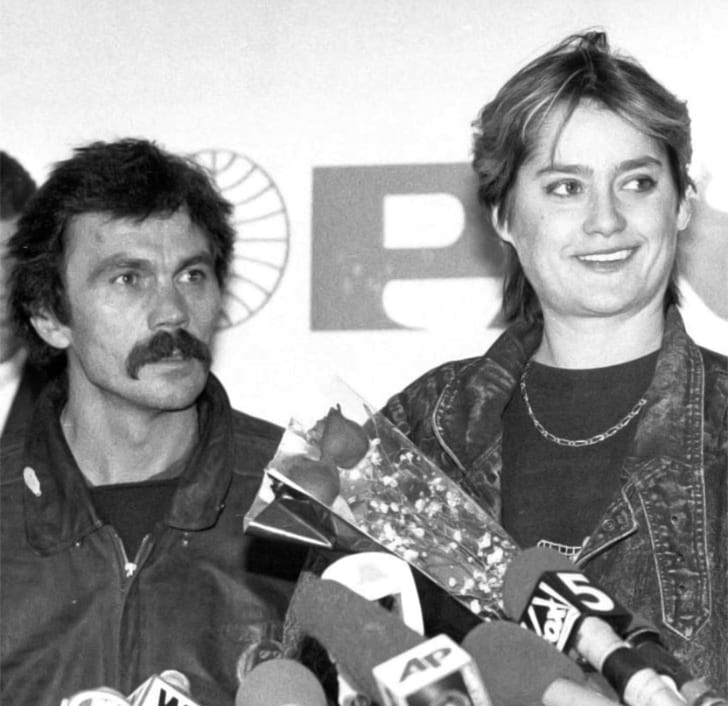
We have to guess that the American press wasn't happy with the way Nadia looked. They probably expected that gracious perfect-ten 14-year-old of the 1976 Summer Olympics. But what they were seeing now was a full-grown woman who understood exactly how tough one's life could be.
In the U.S., she was romantically linked to Nicolae Ceausescu's son. But back in Romania, her mother insisted she'd been brutally assaulted by the dictator's son when she was a 17-year-old virgin. The papers were also saying she'd been romantically involved with Panait, the married man living in America who helped her escape Communist Romania.
All Alone
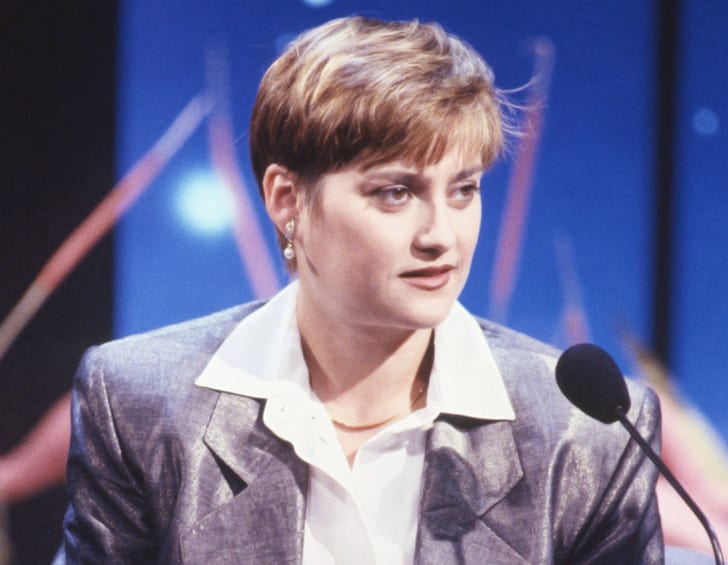
To add to the unfair scrutiny of the press, Nadia was all alone in America. She later told Daily Mail that, in the days before the Revolution, leaving Romania meant "you were gone." She didn't even warn her parents about her escape, because she knew she was never going to be able to see them again!
In the U.S., Nadia was naturally linked to the married Panait because he was the only one around to help her. Her former coach Károlyi was not contacted by the young woman, even though he expressed publically that he wished the best for her. So, was there anyone Nadia could go to now that she was living in the U.S.?
Throwback to 1976
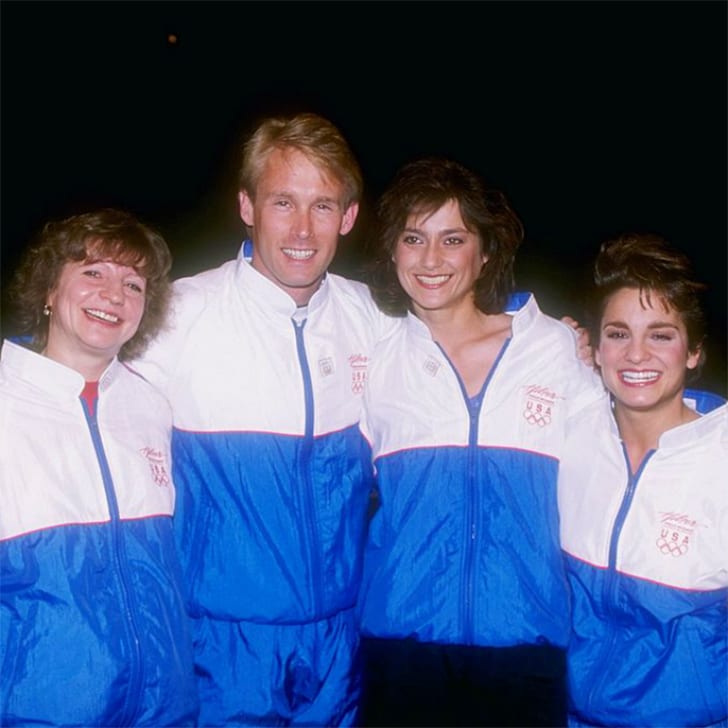
While many lives are defined by one or two crucial moments, Nadia's history seems to be forever linked to that sheer instant of Olympic perfect in the 1976 Montreal games. But this time, was it possible that something actually good for Nadia's life was going to come out of that iconic moment?
This time, it could be. After all, Nadia still had a good friend in America: the "cute" and "fun" gymnast Bart Conner. Like most athletes, Conner was fixated with Nadia ever since he saw her land that historical perfect 10. But Conner and Nadia shared a past, better illustrated by that long-gone kiss the two exchanged at the 1976 American Cup. Was it the good luck kiss that allowed Nadia to land her perfect score?
Looking Out For Nadia

Like most people, Bart Conner found out Nadia was in America through the news. But ever since the gymnast first landed on the continent, Conner did his best to try to contact her. In the days before e-mails and social media were around, that wasn't such an easy task.
After several attempts of reaching Nadia, Conner was left with no notice or reply. Then, he realized the Romanian prodigy was about to appear on the Pat Sajak Show. And he knew this was probably his one opportunity to reconnect with the young woman he wanted so much to help.
Special Appearance

Connor's efforts proved to be worthy. He got a chance to make a special appearance on the Pat Sajak Show, surprising Nadia with a rose bouquet. When Conner first appeared on set, Nadia and her companion Panait were visibly surprised.
And while people rarely show their true colors when they're being filmed for television, it's not hard to guess Nadia was thrilled to see her best American friend. Reportedly arriving at the studio a mere 10 minutes before the broadcast began, Conner took this opportunity to thank Nadia for everything she'd done for gymnastics and to welcome her to her new life in the U.S properly.
The New Life Is Feeling Old

But was there something wrong with Nadia's new life in America? Constantly followed around by her liberator Panait, Nadia was able to escape her gruesomely pressuring life in communist Romania; but that didn't mean she could say she was free.
And this time, we're not talking about the often annoying American press. Oddly enough, her new captor was the man who'd saved her. Panait proved to be a somber character who abused Nadia mentally and potentially physically. In a later interview, the perfect-10 gymnast said Panait kept her in a "prison," forbidding her from contacting everyone she knew, including her family back home and former coach Károlyi.
Being a National Hero Finally Pays Off
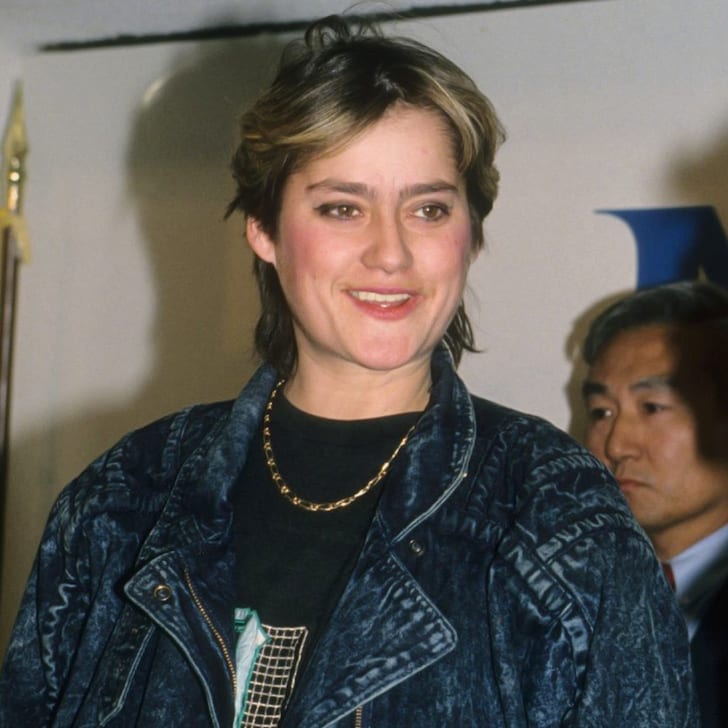
In the U.S., Nadia was in desperate need of a savior. And this time, being a Romanian national hero was finally going to pay off. The man who rescued her from her new captor was Alexandru Stefu, a former coach of the Romanian rugby national team. It's possible, and likely Károlyi was also involved since he and Stefu were known to be good friends.
Attracted by a potential big-money deal, Panait took Nadia to Montreal to meet Stefu, who realized immediately something fishy was going on. Stefu offered Nadia a place to live in Montreal, a city with a wide base of Romanian immigrants. In a 1990 interview, Stefu even said that ''Quebec thinks of Nadia as their star", so the talented gymnast could finally feel at home. But what happened to Panait?
On The Run

Panait knew right away his chances of taking advantage of Nadia were zero to none now that she was living with Stefu and his family in Montreal. But he didn't care; his plan was nearly complete, and it was all about the money.
Panait made the most of Nadia's popularity in the U.S., landing her some lucrative interviews. He then took that Hollywood money and ran away just like a criminal would. He left Nadia with $1,000, escaping with a whopping $150K! But do you know what's even worse? Panait abandoned his estranged wife and 4 children without care.
"Jilted For Comaneci"
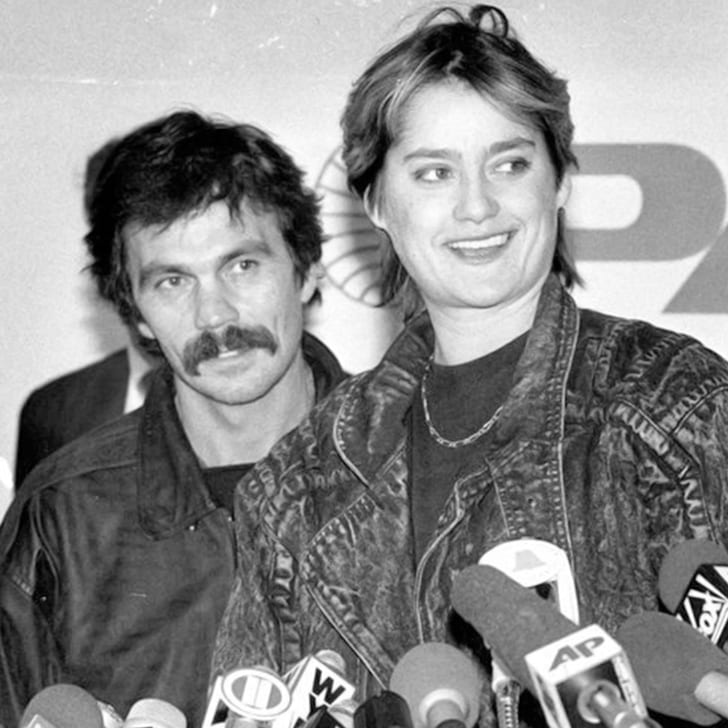
Before the true colors of Panait were finally revealed, the man was in the middle of a media circus that seemed to aim directly at Nadia's reputation. She was labeled a "homewrecker," with many late '90s newspapers claiming she'd stolen Panait from his wife Maria and 4 helpless children.
Newspaper headlines at the time referred to Maria as a poor innocent woman who'd been "jilted for Comaneci" and who couldn't afford to pay for her children's needs. While Maria may also be a victim in this whole story, it's crazy the press decided to charge at Nadia and not Panait, who was the one abandoning his family. But all was good for Nadia now, right?
Tragedy Strikes
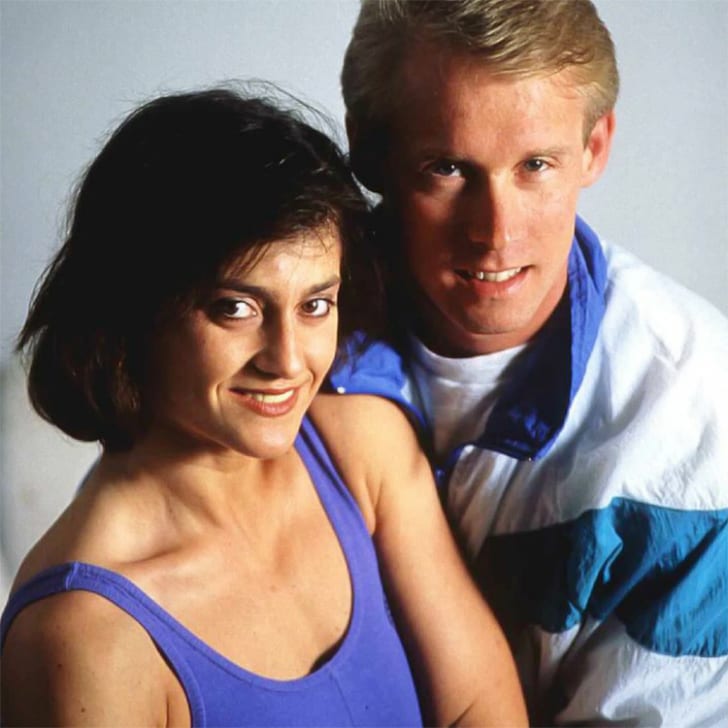
Can Nadia ever get a rest? Not long after she was received by Stefu in Montreal, destiny decided to play yet one more trick on the perfect-10 gymnast. This time, a sudden scuba diving accident resulted in the tragic death of Nadia's good friend Stefu. It was like Nadia was a real-life bad-luck charm!
Hurt due to the loss of a friend, and in panic for being once again lost in an Ocean of loneliness and doubt, Nadia decided it was time to ask for the help of her long-time American friend Bart Conner.
True Love is Free
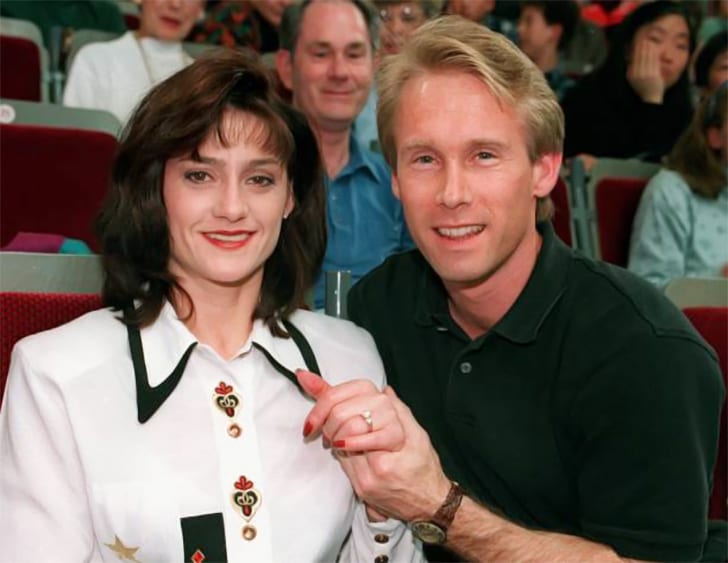
What surprised Nadia the most about Conner was how he was able to give her so much without asking for anything in return. Living in Oklahoma, where he was managing his own gym, Conner invited the perfect-10 gymnast to stay for as long as she wanted.
Conner had kept Nadia on the top of his mind for over a decade, ever since that special first meeting at the 1976 American Cup. Spending so much time together, Nadia and Conner ended up developing a unique friendship: a friendship that eventually blossomed into love!
Tying The Knot Back Home
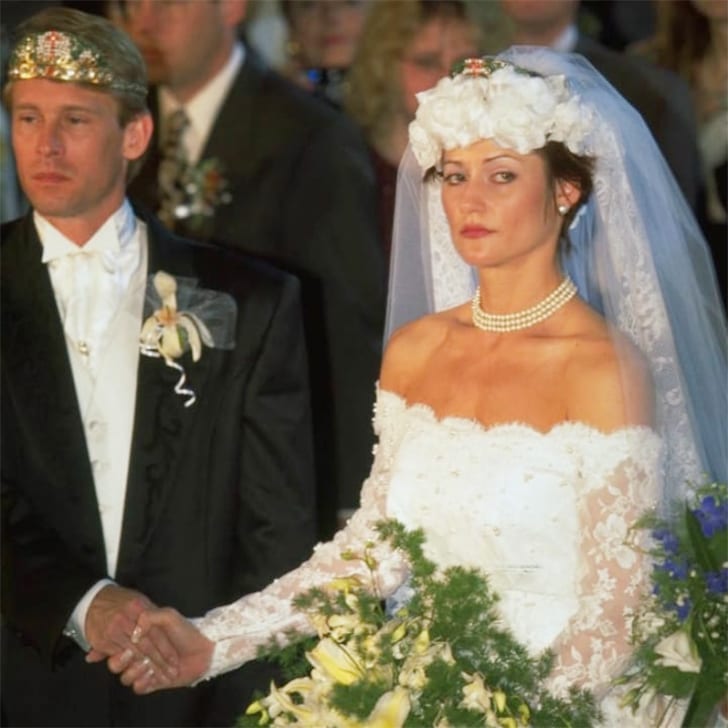
Nadia and Conner found so much peace together they decided to tie the knot. The ceremony was beautiful, but the location was even more important. Honoring the country that gave her and took her everything, and where she was still seen as a local legend, Nadia decided to commit to Conner in the Romanian capital of Bucharest.
Needless to say, Romania was more than prepared to welcome Nadia back with open arms. Her wedding became a national event with a live TV broadcast, and thousands of Romanians tuned-in to watch their national idol exchange vows. The baffled groom even joked about the event, saying that, while most men have to meet the parents of the bride before getting married, he ended up meeting "the entire country."
A True American

Yes, Nadia had a rough time both in her home country of Romania and in her second home of America. But since she was living in Oklahoma and married to a real American, Nadia decided to become a U.S. citizen herself.
Most importantly, she was now a free woman. Without the Communist Party or the money-grabbing Panait on her back, the perfect-10 gymnast was finally able to do some good for those in need. Her life in America has been marked by a series of successful ventures and humanitarian projects.
Everyone Is Entitled To Sports
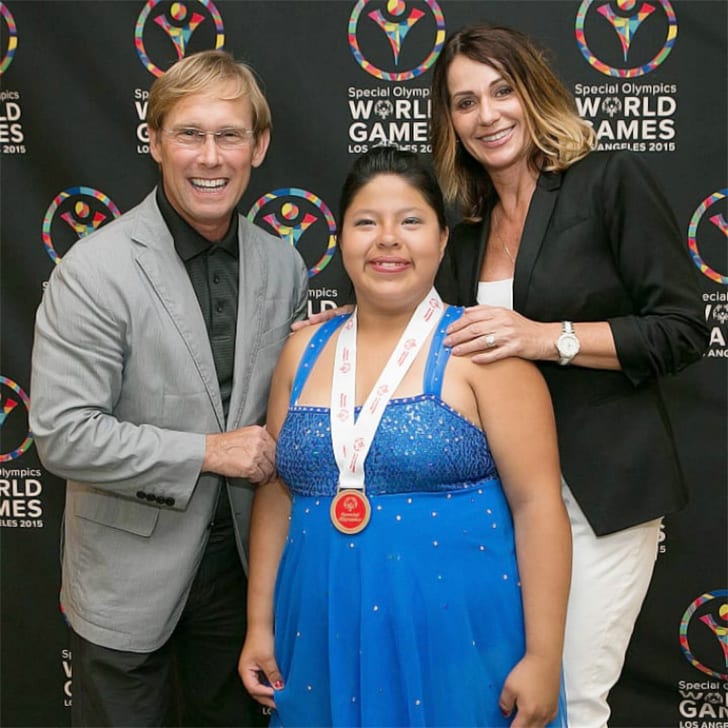
Today, Nadia and Conner are members of the Board of Directors of the Special Olympics, where they work hard to ensure everyone is entitled to sports. The Special Olympics allow people with disabilities to have an official competitive platform where they can develop their athletic skills and show just how talented they can be. Nadia and Conner play a big part in inspiring and helping those athletes.
Two bonafide athletes with Olympic gold to their credit, Nadia and Conner, made for a dynamic duo. But it didn't take long before the happily married couple became a party of three!
Introducing the Young Dylan

When they're not contributing to the advancement of sports in America, Nadia and Conner are enjoying themselves with their son Dylan. Nadia is certainly proud of her young boy. In 2014, when she was being interviewed by the Daily Mail, she did what all happy mommies love to do: she showed the journalist a couple of pictures of her child!
In that same interview, Nadia also recollected some iconic moments from her troubled past. But in the end, she mentioned how happy she was about her new family, even saying, "I finally know who I am."
Gymnastics Is Still a Passion
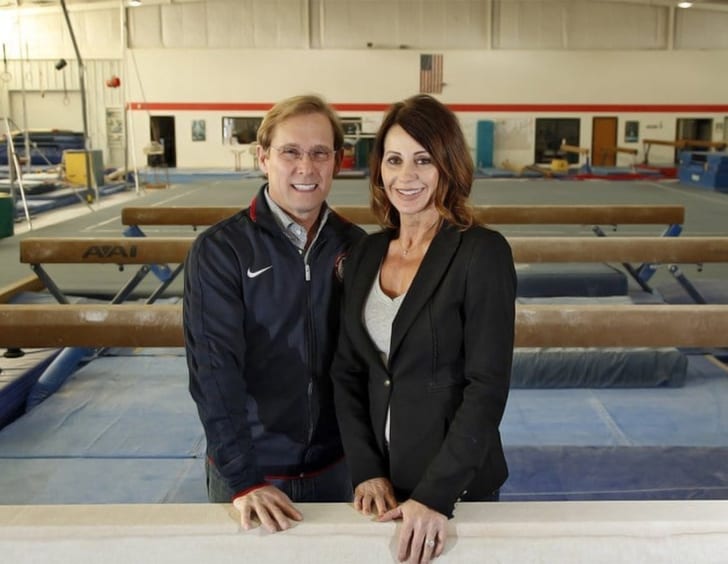
While a common love for gymnastics is not enough to make for a passionate relationship, there's no doubt Nadia and Conner have continued to share a love for the sport. Two former gold champions, they are now working together to help upcoming American gymnasts to achieve their dreams.
They run the Bart Conner Gymnastics Academy of Oklahoma together, and the gym is presented on their website as one of the best-equipped in America. But forget about the equipment; the real upside of training at Conner's gym is the chance of meeting and learning from two of the best athletes who have ever graced the game.
Still an Icon
![]()
If you need any evidence of the fact Nadia's still a hugely popular icon, check her IMDb page! Over the years, she has appeared as herself in over 50 documentaries and special sports-related events. It's just natural: not only she's the first gymnastics perfect-10, but she also had a very intense and interesting life outside of sports.
In fact, actress Katie Holmes was so fascinated about the gymnast's life story she decided to direct a 17-minutes documentary called Eternal Princess featuring Nadia, Conner, and University of Oklahoma gymnastics coach Paul Ziert. Reportedly, the two are also good friends.
10 Out Of 10
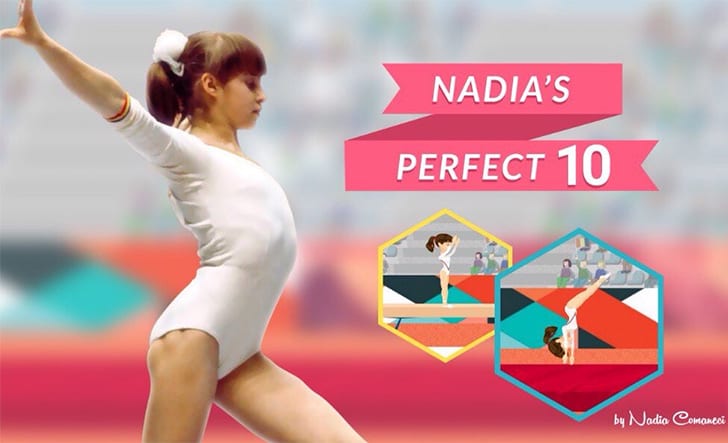
All of our lives are shaped by a few decisive moments. But Nadia's life can always be traced back to one single moment in time. And how many of us can say that our destiny was pretty much decided by the time we were just 14? Nadia was forced to live with that hard truth, but she never gave up, and she's always given her best.
A good example is Nadia's Perfect 10 app, a game for Android phones in which users are supposed to recreate the gymnast's iconic Olympic moment. Today, Nadia has finally learned how to be happy and to make the most of her historical sports record to build a new life for her and her family in the U.S. And believe us: Nadia's journey is still far from over, and you'll be hearing a lot from the talented American-Romanian in the future!
